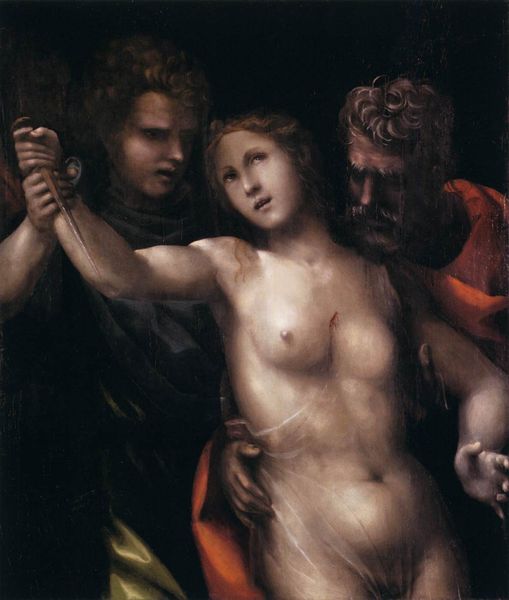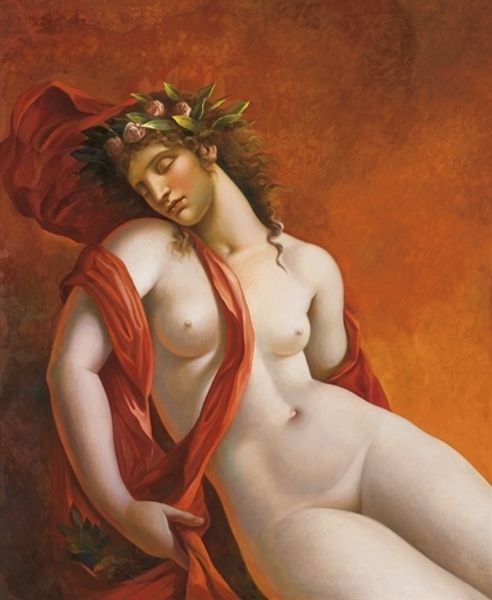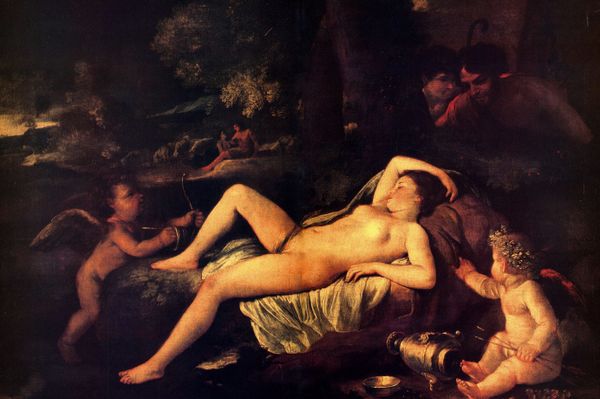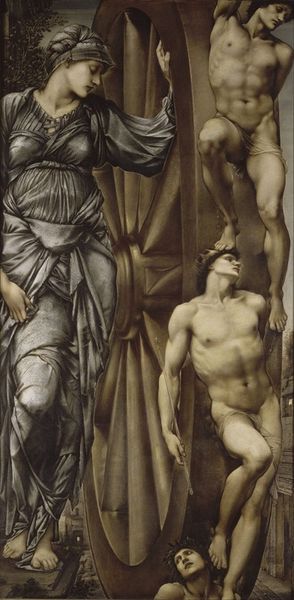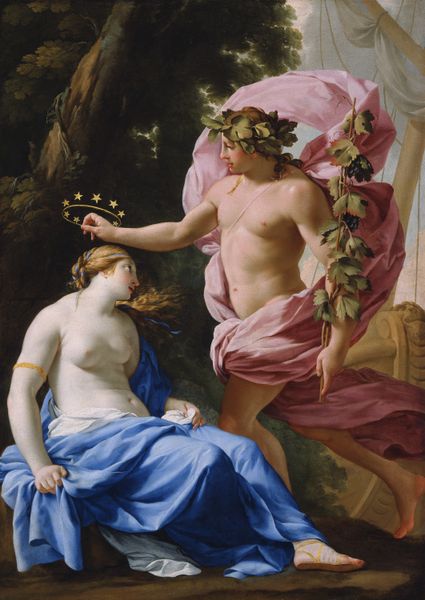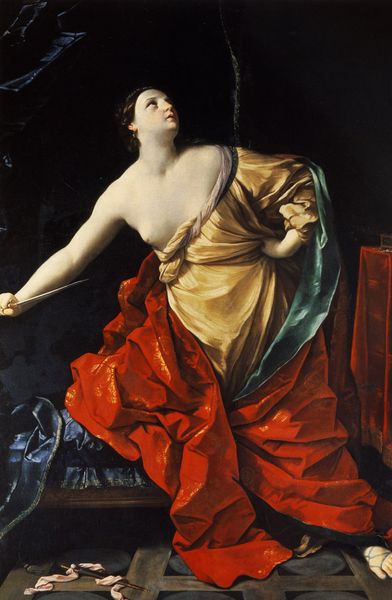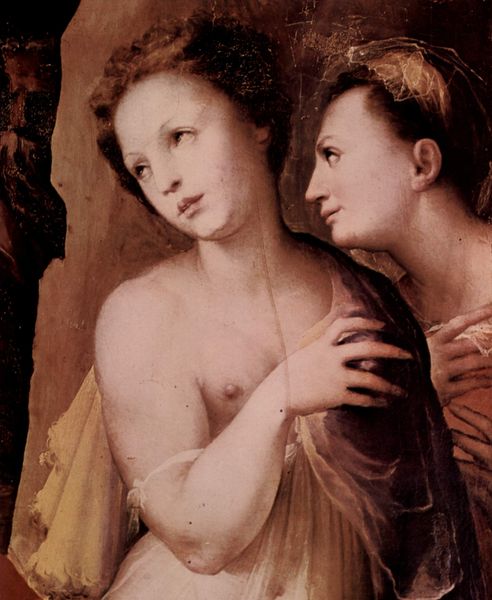
painting, oil-paint
#
portrait
#
allegory
#
painting
#
oil-paint
#
mannerism
#
figuration
#
mythology
#
human
#
history-painting
#
nude
Copyright: Public domain
Curator: The artwork before us, rendered in oil paint, is entitled “Death of Cleopatra,” and was created by Rosso Fiorentino around 1525. It currently resides in the Herzog Anton Ulrich Museum in Braunschweig, Germany. Editor: Right off the bat, there’s something almost unsettling about it. Like a stage play frozen mid-act, everyone's in position, but the curtain never falls. The light makes Cleopatra look like alabaster, so still and perfect, as if she's simply napping...a fatal nap, of course. Curator: Indeed, Fiorentino captures a complex moment here. Note how he utilizes the Mannerist style to depict not just a historical event, but also an allegorical and theatrical one. The exaggerated musculature and elongated limbs—particularly in the attendant—signal a departure from High Renaissance naturalism. Editor: She's clearly agonizing! The attendant looks genuinely distressed; twisting her hands together in worry as though trying to prevent this moment...I wonder, could she have talked her out of it, do you think? It all seems a bit unnecessarily dramatic. It feels like there’s a distinct emotional coolness to the entire scene. It's grand but aloof. Curator: Perhaps aloofness is the key here. The semiotics of Cleopatra's pose and the deliberate coolness underscore the artist’s intention. Consider the careful orchestration of color, with contrasting highlights and shadows directing the viewer's eye. And notice how Fiorentino avoids portraying the explicit moment of death, favoring instead a presentation of idealized beauty in eternal repose. Editor: She has a sort of...distant calm. It's interesting you brought up theatricality earlier. Everything, from the serpent on her arm to her repose feels carefully chosen for maximum tragic effect, like she is in command of even her death. Which maybe makes the sorrow of her attendant that more real, raw, like someone at dress rehearsal. Curator: That observation rings true. Through a careful examination of line, form, and chromatic arrangement, Fiorentino achieves a formal structure in “Death of Cleopatra” that elevates personal tragedy to the realm of grand historical statement. Editor: Looking at the piece again, beyond all the technicalities we've unpacked, I’m struck by the simple pathos of human farewell – a quiet witness to the tragic decisions. It makes me contemplate not only the past but how mortality remains our ultimate common story.
Comments
No comments
Be the first to comment and join the conversation on the ultimate creative platform.
